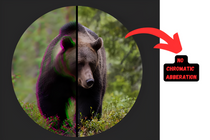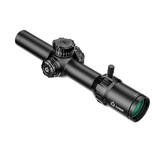MOA Distance Chart (MOA at 50-100 yards)
To make precise sight adjustments, you need to understand what MOA is and how it works.
This detailed MOA chart will help you determine MOA at various distances from 100 to 1,000 yards. Consult this chart if you have any of the following questions:
- What is ¼ MOA at 50 or 100 yards?
- What is 1MOA at 100 yards, 200 yards?
MOA Chart: What is MOA at 100-100 Yards?
| 50 yards | 100 yards | 200 yards | 300 yards | 400 yards | 500 yards | 600 yards | 700 yards | 800 yards | 900 yards | 1000 yards | |
| 1/4 MOA | 0.13" | 0.26" | 0.52" | 0.79" | 1.05" | 1.31" | 1.57" | 1.83" | 2.10" | 2.36" | 2.62" |
| 1/5 MOA | 0.10" | 0.21" | 0.42" | 0.63" | 0.84" | 1.05" | 1.26" | 1.47" | 1.68" | 1.88" | 2.09" |
| 1 MOA | 0.52" | 1.05" | 2.09" | 3.14" | 4.19" | 5.24" | 6.28" | 7.33" | 8.38" | 9.42" | 10.47" |
| 2 MOA | 1.05" | 2.09 " | 4.19 " | 6.28 " | 8.38 " | 10.47" | 12.57" | 14.66" | 16.76" | 18.85" | 20.95" |
| 3 MOA | 1.57" | 3.14 " | 6.28 " | 9.42 " | 12.57 " | 15.71" | 18.85" | 21.99" | 25.13" | 28.27" | 31.42" |
| 4 MOA | 2.09" | 4.19 " | 8.38 " | 12.57 " | 16.76" | 20.95" | 25.13" | 29.32" | 33.51" | 37.70" | 41.89" |
| 5 MOA | 2.62" | 5.24 " | 10.47" | 15.71 " | 20.95" | 26.18" | 31.42" | 36.65" | 41.89" | 47.13" | 52.36" |
What is MOA?
MOA stands for Minute of Angle, which is an angular unit of measurement, meaning it spreads apart and scales with distance from a single point (like from your eye or your rifle barrel).
- 1 MOA = 1/60th of a degree
At 100 yards, 1 MOA is 1.047 inches. However, in practical shooting, people round 1 MOA to 1 inch per 100 yards for simplicity.
- 1 MOA at 200 yards = 2.094 inches
- 1 MOA at 300 yards = 3.141 inches
Understanding MOA Distance
MOA values scale linearly with distance (e.g., double the distance is double the spread)
- 1 MOA ≈ 1.047 inches at 100 yards
- 1/4 MOA ≈ 0.262 inches at 100 yards
- 1/5 MOA ≈ 0.209 inches at 100 yards
And so on…
Why MOA Matters in Shooting
Scopes often adjust the point of impact using MOA-based clicks:
- 1 click = 1/4 MOA is most common (4 clicks = 1 MOA)
- Each click moves the bullet ~0.26" at 100 yards
Common MOA Increments in Scopes
| MOA Increment | Description | Inch Change @ 100 yds | Common In… |
| 1 MOA | 1 full minute of angle | 1.047" | Reticles, target grouping comparisons |
| 1/2 MOA | Medium adjustment | ~0.52" | Some hunting scopes |
| 1/4 MOA | Most common for precision scopes | ~0.26" | Precision and tactical scopes |
| 1/8 MOA | Fine adjustment | ~0.13" | Benchrest and long-range scopes |
| 1/10 MOA | Extra-fine adjustment (rare) | ~0.10" | Some European or custom scopes |
Example of MOA adjustment in Scopes
Say your shot is hitting 2 inches low at 100 yards, and your scope adjusts in 1/4 MOA per click:
- 1 MOA = ~1 inch at 100 yards
- So 2 inches = 2 MOA
- 2 MOA × 4 clicks per MOA = 8 clicks up
MOA in Scopes (LPVOs, HPVOs, Red Dots)
Here's a detailed breakdown of how to use MOA distance effectively with LPVOs, HPVOs, and red dots, tailored to what each optic is best at.
LPVOs (Low Power Variable Optics)
Low Power Variable Optics are ideal for close to mid-range (0–600 yards).
MOA Tips for LPVOs.
- Zero at 100 yards: This keeps your holdovers simple for most uses.
- Use reticle holds at higher magnification: LPVOs often have MOA-based reticles with subtensions (like hash marks for 2 MOA, 4 MOA, etc.). These are handy for fast holdovers instead of dialing.
- Dial if needed: You can still dial your turrets, but for quick transitions (like in 3-Gun competition or hunting), it's faster to use the reticle.
- Understand your subtensions: If your reticle has 2 MOA spacing, know how far that equals in inches at 100, 200, and 300 yards (2 MOA ≈ 2", 4", 6" at those ranges).
HPVOs (High Power Variable Optics)
HPVOs range from 4–16x, 5–25x, 6–36x, and are best for long-range shooting (300–1,000+ yards)
MOA Tips for HPVOs
- Precise adjustments: Use 1/4 MOA or 1/8 MOA clicks to fine-tune the point of impact. At 500 yards, 1/4 MOA = 1.31 inches.
- Use turret dialing: HPVOs are meant for dialing. Calculate your elevation and windage in MOA using ballistic calculators, then dial those values precisely.
- Know your distance: The farther out you shoot, the more important it is to understand how many inches MOA covers at that range.
- Zero at 100 or 200 yards, then use dope cards to track MOA corrections for various distances (e.g., 6 MOA up for 400 yds).
Red Dot Sights
Red dot sights are best for close-quarters shooting scenarios (0–100 yards)
MOA Tips for Red Dot
- Rough adjustments: Most red dots adjust in 1/2 MOA or 1 MOA per click — that’s about 0.5–1 inch per click at 100 yards.
- Zero at 25 or 50 yards: This gives you a good center hit out to 100 yards without thinking about the drop much.
- Use holdovers, not dialing: You typically don’t dial red dots — just aim slightly high if the target is far away.
- Know your dot size: A 2 MOA dot covers 2 inches at 100 yards. If you're shooting small targets, this can affect precision.







